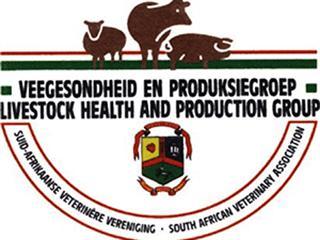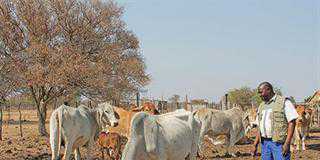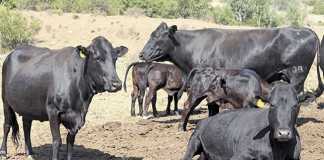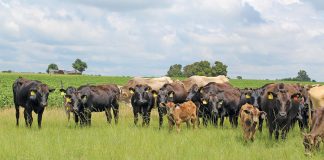
- Internal parasites: Reports of severe wireworm infestations were received from areas where good rainfall was recorded. Farmers must monitor their animals regularly for signs of verminosis, such as pale mucous membranes, bottle jaw, diarrhoea and weight loss. Check with your vet as to which anthelmintic groups to use, as drug resistance of parasites is rife.
- External parasites: Ticks love warm and humid conditions, and blue, bont-legged, brown ear and bont tick numbers have increased dramatically. As have reports of tick-transmitted diseases such as African and Asiatic red water, anaplasmosis and heartwater. Many cases of sweating sickness caused by a toxin in the bont-legged tick also occurred.
Discuss tick control measures with your vet, as tick resistance to acaricides needs to be taken into consideration.
- Insect-transmitted diseases: Cases of lumpy skin disease, three-day stiff sickness, blue tongue and African horse sickness were reported. As these diseases are viruses, vaccination is the way to go to prevent them from occurring.
A Rift Valley fever scare was received from Somerset East, but could not be confirmed histologically. With the good rains that fell in certain parts of the country resulting in mosquito breeding havens, vaccination programmes for this devastating disease should not be neglected.
View the Livestock Disease Trends Map in your region
An increase in flies brought about an increase in opthalmia, calf diarrhoea and mastitis. Their role in the transmission of brucellosis should not be under estimated.
- Diseases: Bacterial diseases reported include blackquarter, swelled head, pulpy kidney, botulism, tetanus, blood gut, red gut, pasteurellosis, Esherichia coli, brucellosis, ram’s disease, leptospirosis, abscesses, foot rot and mastitis. Most of these can be prevented with a well-managed vaccination programme.
Other viral diseases reported were bovine malignant catarrh (snotsiekte), rota and corona viruses.
- Venereal diseases: Every month trichomonosis and vibriosis are reported. These diseases cost farmers millions of rands due to loss of potential calves not born.
- Poisonings: The following poisonings were reported – urea, tulip, Lantana, gousiekte, ink berry, Lippia, slangkop, Ranunculus spp., Galenia (waterpens), chinkerinchee, prussic acid, acidosis, geeldikkop, mycotoxicosis (fungi), copper and lead. About 30 animals died when eating green feed contaminated with the fungus Aspergillus clavatus.
Fertility: Due to the drought conditions before the breeding season, farmers should make sure that their animals are cycling. In certain areas the breeding season may have to be extended. Arrange with your vet to do early pregnancy examinations so as to assess the situation on the farm.
Feedlot Report
Sheep feedlots
Health was good in December. Foot rot and foot abscesses caused problems in kraals that had been very wet. Prolapses occurred in sheep when they coughed and was accompanied with pneumonia. A few cases of bladder calculi occurred and emergency slaughter had to be done
Cattle feedlots
Anaplasmosis caused losses in numerous feedlots since these animals had been diseased for some time before they were seen and treated. Some cases of red water were seen. Blackquarter caused some losses in a few feedlots. This disease usually occurred in fat cattle in the final stage of feeding. Urinary calculi occurred. Some cattle were covered with warts. We suspect that such animals’ immune systems were compromised and that it’s likely they were previously were subjected to a BVD infection.













